Sturm Bratislava
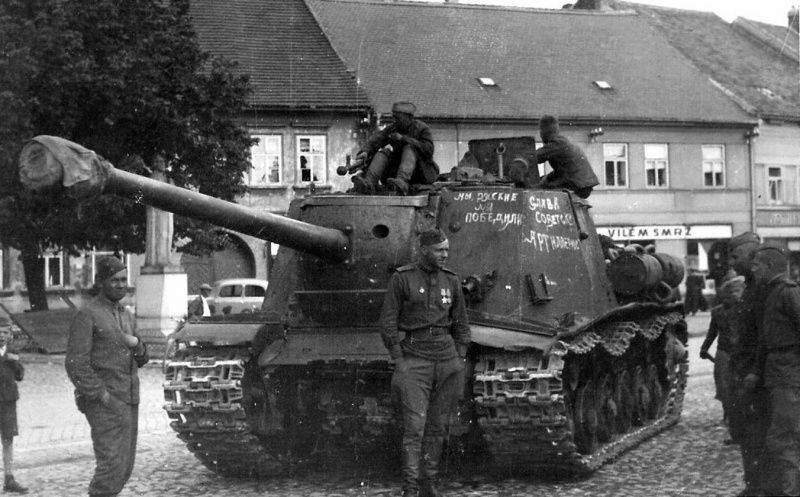
70 years ago, 25 March 1945, the Bratislava-Brnovsk operation began. In the course of this operation, the troops of the 2 of the Ukrainian Front, commanded by Rodion Malinovsky, completed the liberation of Slovakia, occupied the Bratislava and Brno districts, opened the way to the central districts of Czechoslovakia and created the conditions for a quick offensive against Prague.
The situation before the operation
In the spring of 1945, the Red Army continued its offensive on the southern wing of the Soviet-German front. On the right flank of the 2 of the Ukrainian Front, the 4 of the Ukrainian Front 10 of March launched the Moravian-Ostrav operation, storming the well-fortified Moravian-Ostravsky industrial region (Moravian-Ostrava offensive). On the left flank of the 3, the Ukrainian front of 16 March launched an offensive against Vienna (Vienna operation). By March 23, the Soviet troops successfully broke through the enemy defenses and rapidly developed the offensive in the Viennese direction.
The left flank of the 2 Ukrainian Front, the 46 Army of Petrushevsky and the 2 Guards Mechanized Corps of Sviridov, also took part in the Vienna operation. The army of Petrushevsky successfully attacked the Vienna direction and at the same time created a threat to the enemy's Bratislava grouping from the southern direction. In the morning of March 25, German troops began to retreat to the border of Austria, and the Soviet troops rushed to the so-called. Vienna Gate - 20-kilometer passage between the Danube and Lake. Neyzidler.
The right wing of the 2 of the Ukrainian Front - the 40-I army together with the Romanian 4-th army, 10 in March, the beginning of the Bansk-Bystritskaya operation. From 20 to 25 in March, Soviet-Romanian troops destroyed the enemy’s last bridgehead on the left bank of the Hron River and liberated Banska Bystritsa, an important industrial center and communications hub. Therefore, the moment was very successful for an attack on the Bratislava direction.
Operation plan
According to the plan of the Soviet command, the main blow was inflicted in the direction of Bratislava, Malacki, Brno. The main blow was dealt by the adjacent flanks of the 53rd and 7th Guards armies, with the support of the 1st Guards Horse-Mechanized Group, the Danube Military flotilla and 5th air army. The 40th Army dealt another blow in the direction of the city of Trencin. The 1st and 4th Romanian armies supported the offensive.
Adjacent flanks of the 53 and 7 of the Guards armies were to force the river Hron, to break through the enemy defenses. After breaking through the enemy defenses, the 1-I Guards Equestrian Mechanized Group was injected into the breach. Pliev's group was to develop the success of combined-arms armies and prevent the enemy from gaining a foothold on the pre-prepared rear lines of defense on the Nitra, Vah and Morava rivers. Directly Bratislava was supposed to take 7-I Guards Army. At the second stage of the operation it was planned to liberate the Brno area.
In March, the troops of the 2 of the Ukrainian Front conducted a thorough and secretive preparation for the offensive. Towards the line of the river Hron, which was a serious obstacle, pontoon units and transport means were concentrated, the smallest details of the crossing were worked out in the headquarters. The heavily fortified line of the German army passed along the river Hron. It was very convenient, since the western bank of the river had a significant slope. In addition, in spring the rivers spread widely, and Hron, Zhitava, Nitra and Vah proved to be serious obstacles.
However, our troops also had advantages. On the eastern bank of the Hron River there was a significant forest that hid the preparations of the armies of the 2 of the Ukrainian Front. This allowed us to quietly concentrate significant forces to quickly cross the river. The forward command post of Malinovsky was moved to the height directly by the river. In addition, the Soviet command established contact with the Slovak partisans, who provided valuable data on the enemy fortifications on the Vah river, where the enemy’s rear defense line was held, as well as information on the defense plans of the cities of ilina and Bratislava. Slovak partisans also provided guides.
The forces of the parties
Soviet Union. Part of the forces of the 2nd Ukrainian Front took part in the operation: the 7th Guards Army of Shumilov, the 53rd Army of Managarov, the 40th Army of Zhmachenko and the 1st Guards Horse-Mechanized Group of Pliev. The operation was supported by the 1st and 4th Romanian armies of Atanasiu and Desquelescu, the 5th air army of Goryunov (she partly supported the 46th army, advancing in the Vienna direction), the Romanian separate air corps, the Danube military flotilla of Kholostyakov. A total of about 340 thousand soldiers and officers (of which the Soviet troops - more than 270 thousand people), more than 6 thousand guns and mortars of caliber 75 mm or more, 240 tanks and self-propelled guns, 645 aircraft.
Germany. The 11 divisions of Army Group South, under Otto Woehler, were defending against Soviet troops (from Austria's Army Group, Lothar Rendulich, from 30 April). On the river Hron defended the troops 8-th army of General Krazinga. The air support of the ground forces was carried out by the 4 th air fleet. The German group numbered about 200 thousand soldiers and officers, 1800 guns and mortars of large calibers, 120 tanks and self-propelled guns, 150 aircraft.
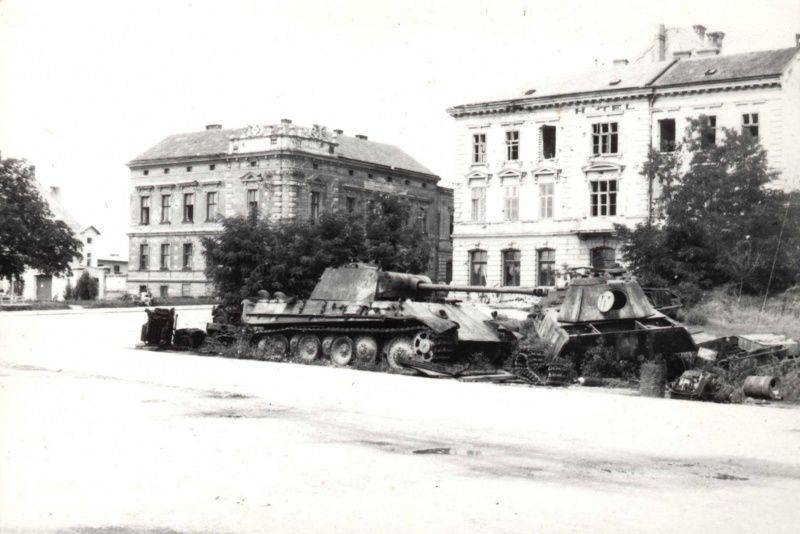
Broken German tanks "Panther" on the street of the Czech city of Znojmo
Battle
The first stage of the operation. 23 March 1945, parts of the 25 Guards Rifle Corps, stationed on the left flank of the 7 Guards Army of Shumilov, launched an auxiliary operation to distract the enemy. Our troops crossed the river Hron and launched an offensive along the Danube on Komarno. A major role in the success of this operation was played by the actions of the Danube Flotilla, which on March 28 landed troops (parts of the 83 Brigade of the Marine Corps commanded by Colonel Smirnov) in the enemy rear in the Mocha area, and then seized the port of Kommarno. March 30 advancing from the front, the Soviet troops took Komarno, combining with advanced airborne units.
Subsequently, the Danube forced parts of the 23 Infantry Corps of the 46 Army under the command of Major General M. F. Grigorovich (he was then transferred to the 7 Guards Army of Shumilov). Grigorovich's 23 Corps crossed over to the north bank of the Danube west of Komarno, going back to the enemy and, in cooperation with the 25 Guards Rifle Corps 7 of the Guards Army, advancing from the front, launched an offensive on Bratislava between the Danube and the Small Danube. This blow sharply worsened the position of the enemy, crushing his defense.
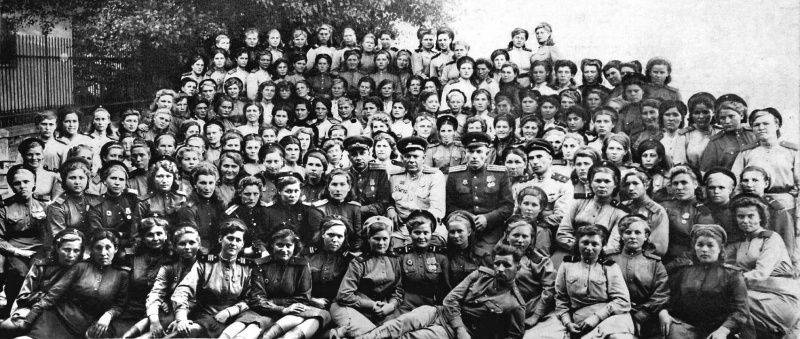
Group portrait of military personnel of the 329 anti-aircraft artillery regiment in the town of Komarno
Meanwhile, the main attack was prepared on the right flank of the army of Shumilov by the forces of the 27-th Guards Rifle Corps in conjunction with the left-flank connections of the 53-th army. On the night of 25 in March, the forward battalions of the main strike group, under the guise of reconnaissance in force, to which the Germans had become accustomed, crossed the Gron, destroyed the enemy’s guard posts, and during the night captured the entire right-bank floodplain at the 17-kilometer section, leaving directly to the front edge of the German defense. Simultaneously, the pontoon began to direct the crossing. The clear, well-coordinated work of the pontooners played a big role in the success of the offensive.
At 6 o’clock in the morning a powerful artillery preparation began. Volleys of guards mortars rang out, guns of all calibers spoke. At the same time, blows to the enemy were dealt by our aviation. Thanks to pre-conducted aerial reconnaissance, aerial photography, enemy positions, a system of trenches, firing points, artillery batteries that shot the river, and the location of tactical reserves were identified in advance. Therefore, powerful artillery and aviation strikes gave a great effect. At this time, advanced battalions and sappers continued to move. Using the nightly success, our troops began to occupy a wide bridgehead. The main forces began to force the river. While the troops of the first echelon pierced the first line of defense of the enemy, the Malinowski Commander ordered additional crossings to be entered in the breakthrough of KMG Pliev.
The first day of the offensive led to success. During one day I was busy with a large bridgehead wide in 20 km and in depth on 10 km. The defense of the enemy was broken through. The offensive of our troops actively supported artillery. Immediately, batteries of direct support for infantry were sent to the other side, which advanced to tank-dangerous areas, since aerial reconnaissance reported on the concentration of German reserves with tanks in the area of the occupied bridgehead.
In the evening of March 26, the Pliev group launched an offensive. The Guards KMG completed the breakthrough of the enemy’s tactical zone of defense and rushed into the operational depth. As a result, by March 28, the shock grouping of the 2 of the Ukrainian Front had already opened a gap up to 135 km along the front and 40 km in depth, freeing settlements near 200. Soviet cavalrymen acted skillfully and inventively. They could act outside the roads, bypassing the enemy strongholds and leaving the enemy’s rear, preventing him from gaining a foothold on new frontiers, seizing equipment and destroying manpower. At the word "Cossacks" the Germans literally turned pale.
The cavalry of Pliev broke through the river Zhitava. Although trying to somehow slow down our troops, the Germans blew up all the bridges over Zhitava, leaving even a piece of equipment. Then our troops reached the Nitra River. The Germans had high hopes for this rear line. Such important strongholds as the cities of Nitra, Komyatitsa, Shurani, and Nové Zamky were located here. The Germans stubbornly resisted, went into counterattacks. However, our troops stubbornly pressed the enemy to the west. The soldiers of the 10 Guards Cavalry Division under the command of Major General Shmuylo bypassed the city of Surani, which predetermined its fall. Other units cut communications leading to Nova Zamky and by the end of 29 in March they took the city by storm. This opened up the shortest path to Bratislava for our troops. A large role in these operations was played by Soviet aviation, which inflicted continuous strikes on the retreating forces of the enemy. Aviation pretty well interacted with Pliev's cavalry.
At the same time, our troops reached Nitra. Pliyev's cavalry intercepted the roads connecting the German garrison of Nitra with the west. German troops lost the possibility of retreat. The Soviet infantry, with the support of artillery, attacking from the front, captured the crossing and broke into the eastern outskirts of the city. From the north, parts of the 53 Army of Managarov came out to the city. German troops, hiding behind the rear guard, retreated into the mountains. There, their remnants of the "cleaned" guerrillas. So 31 March, our troops took Nitra.
After freeing Nova Zamki and Surany, the Soviet troops 30 March reached the Vah River. Bridges over the river were destroyed. The deep and deep river with a fast current that spilled over 250 meters during the spring flood was a serious obstacle. However, the engineering units under the leadership of General Tsirlin in the shortest possible time erected a heavy crossing, which allowed our troops to maintain rapid rates of advance. By the end of the day, Soviet troops forced Vag. On April 1, the cities of Trnava, Hlohovec and Senec, which covered the immediate approaches to Bratislava, were taken.
German troops lost rapidly between the Nitra and Vah rivers because of the swift attack of the 2 Ukrainian Front. weapons and technology, which significantly weakened their combat capability. The Soviet Stavka set a task for the front to take Bratislava no later than 5-6 in April, and then proceed to the liberation of the Brno, Znojmo, Stockerau area.
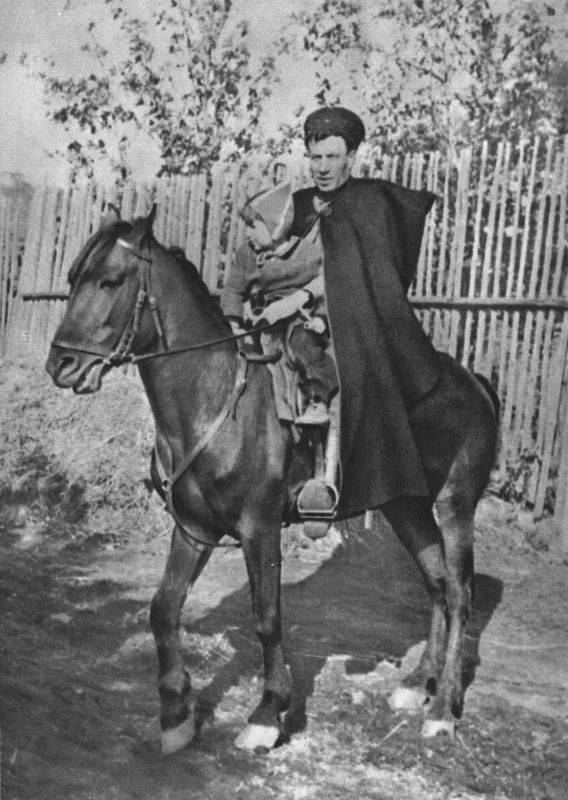
Soviet Cossack with a Czech child on horseback
Sturm Bratislava
April 1 The 25 Guards Rifle Corps of the 7 Guards Army of Shumilov reached the eastern and northeastern outskirts of Bratislava. Parts of 24 and 27 of the Guards Corps of the same army and KMG group reached the Small Carpathians, that is, in the area north-east of the city.
The city was pretty solidly fortified. At the approaches to the city, moats were dug, minefields were set up, firing points were installed in many stone buildings, street roads were blocked with pillars, rubble and barricades. The northern outskirts of the city covered the Small Carpathians, turned into an impregnable frontier, from the south - the Small Danube and the Danube. Therefore, the Germans moved most of the fireplaces to the eastern outskirts, to the area between the mountains and the river. The external contour of fortifications consisted of three trench lines with numerous reinforced concrete weapon emplacements. In addition to the remnants of the defeated front-line units, the city was defended by numerous auxiliary units, the militia, engineering and labor battalions.
It was a toughie. However, it was already impossible to stop the advance of the Soviet troops. In order to accelerate the defeat of the Bratislava garrison, the commander of the 7 Guards Army, Mikhail Shumilov, decided to bring to the operation the newly included 23 Corps and the Danube Flotilla. Ships of the Danube Flotilla from Komarno made a new 75-kilometer-long shot at the unprotected mine-covered fairway to Bratislava and the sailors took part in the storming of Slovakia. They planned to cover the city from the northeast, southeast, and deliver strong blows from several directions.
On April 2, our troops broke through the outer line of the enemy’s defense and broke into the eastern and northeastern outskirts of the city. For better coordination of actions, assault groups were formed. They stormed every quarter, every street and house. Meanwhile, our troops rushed to the city and through the Small Carpathians, breaking the strong line of defense of the enemy among the wooded mountains. As a result, the threat of bypassing the city from the north and northwest was created. The Germans went on counterattacks, trying to throw our troops away from communications in the north-west, but without success.
Two days was the storming of the city. By April 12 4 clock, our troops reached the center of the city. The last decisive assault on Bratislava began. By the end of the day the city was captured, the remnants of the German garrison fled toward Vienna. In Moscow, a grand salute in honor of the heroes of the storming of Bratislava. The 23-th and 25-th Guards Rifle Corps, 252-I and 409-I infantry, 5-I and 26-th anti-aircraft artillery divisions received the honorary title "Bratislava".
Meanwhile, the offensive of the Soviet troops on the right wing of the front was successfully developing. The 40 Army Zhmachenko, with the support of the Romanian troops, fought hard for several days at the approaches to Banska Bystritsa. The German command considered this city one of the key positions in the Carpathians, so it had a strong defense. Banska Bystritsu on the nearest approaches covered three belts of powerful long-term fortifications. However, our troops forced the river Hron, occupied two bridgeheads to the south and north-east of the city. The Germans counterattacked, trying to throw our troops back into the river, but without success. On March 24, units of Zhmachenko’s army broke into the city and on March 25 cleared Banska Bistritsa from the enemy.
Then our troops went around the city of Kremnica from the flanks and the rear, a powerful center of resistance in the same direction and on the night of April 3 went to storm the settlement. After a fierce battle, in the morning the city fell. 5 April was taken as an important communications hub of the city of Prevedis. In addition, from Prevedis to Trencin there was an important military-industrial region of Czechoslovakia. The mountains were rich in minerals. Enterprises produced ammunition, explosives, engineering equipment and communications equipment. Technical workshops rebuilt tools and self-propelled guns. A car repair factory was located in Trencin, which restored tanks. Therefore, the Germans defended this area with particular tenacity.
Thus, during the 10 days of the offensive, troops of the 2 of the Ukrainian Front broke the German army’s defense lines on the Hron, Nitra and Vah rivers, captured the Bratislava fortified area, liberated several hundred settlements. It took our troops only two days to take Bratislava. From Bratislava, a direct road to Vienna opened.
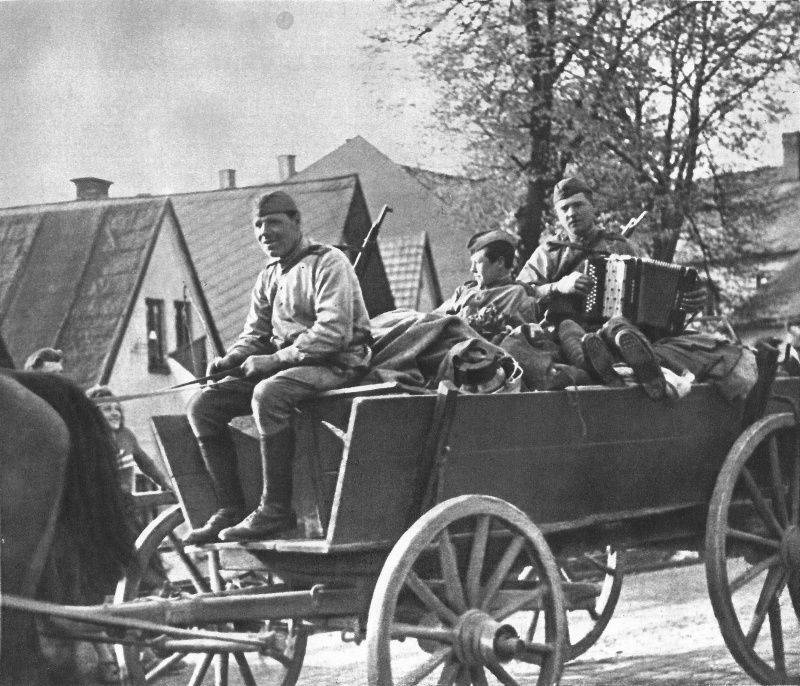
Soviet column, welcomed by the locals, passes through the Czechoslovak village
To be continued ...
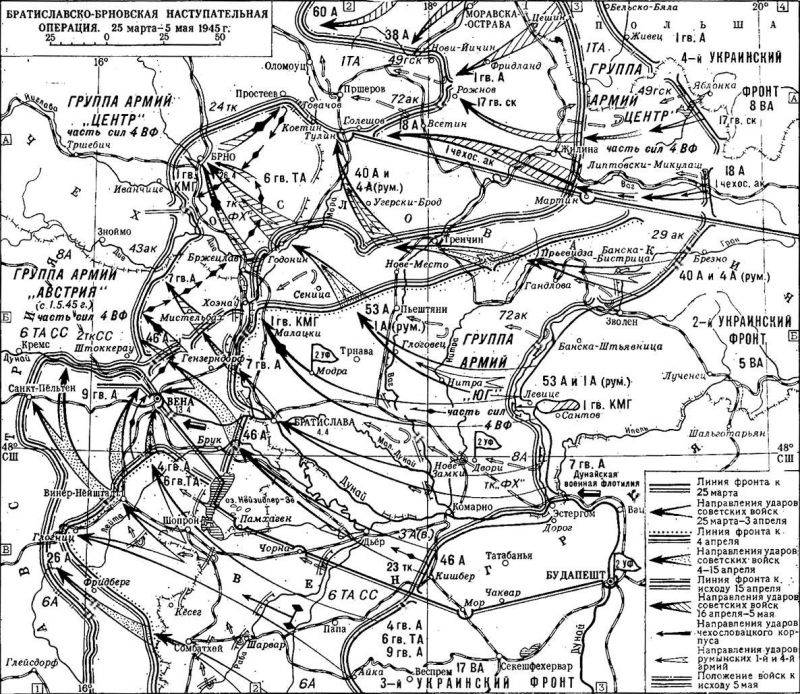
Information